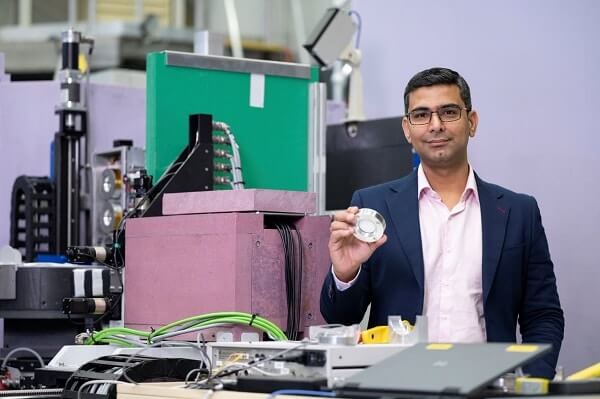A team of scientists from the Australian Nuclear Science and Technology Organisation (ANSTO) and the University of New South Wales (UNSW) has collaborated on research that will transform fire safety through the discovery of a new lightweight fire-retardant material – chemical compound MXene (pronounced max-een) mixed with Chitosan (found in prawn shells).
A major advantage of fire-retardant materials is that they can self-extinguish if they ignite.
Research led by Dr Guan Heng Yeoh of UNSW focused on Titanium Carbide material called MXene, which showed exceptional properties of fire retardancy. Dr Jitendra Mata, a senior instrument scientist at ANSTO was invited to contribute to the understanding of this material’s behaviour at the nanometre level.
He mentioned that such collaborative projects rely heavily on the knowledge of materials at nano and micro scales.
“The [composite material’s] performance and application depend on this knowledge and I am a world expert when it comes to understanding complex materials at nano and micron length scales using neutron scattering,” Dr Mata told Indian Link.
“Human hair is roughly 75 micrometres and the length scale we studied in this project is at least 25000 times smaller than the thickness of human hair,” he said.
The Australian Centre for Neutron Scattering (ACNS) at ANSTO houses state of the art neutron scattering instruments. These instruments have the capability to study structures at the molecular and atomic levels.
READ ALSO: Veena Sahajwalla: NSW Australian of the Year 2022

(bottom from left) Andrew Whitten and Jitendra Mata. (Image supplied)
The collected data at ANSTO revealed the layered structure of MXene. These results helped the team of scientists to prove their hypothesis about MXene’s thermal behaviour and subsequently its applications in fire-fighting materials.
“MXene, due to its layered (lamellar) structure is extremely light and can easily be made in the formulation which then can be used to create very thin layers.
“This then can apply as coating or even as ‘paint’ on various surfaces and materials to make them fire retardant; one does not have to produce special material for firefighting separately.
“In our lab testing, we have noticed that it only increases the weight of the material by 5%, however it improves the fire retardancy by 60 to 70%,” he added.
What else can this research contribute to?
“Various composite materials have been formed by combining MXene with other small molecules. These composite materials have shown significant electrical and thermal properties”.
“This makes them ideal candidates for electronics, battery, hydrogen storage, and other thermal specific application materials. Our research will also have significant impact in these areas,” he said.
Research was conducted on Bilby, an instrument similar to Quokka.
Aside from his contribution to MXene testing, Dr Mata has been engaged in researching hydrogels (highly absorbent gels that do not dissolve in water) and their biomedical applications for the last five years.
READ ALSO: Niraj Lal in 2021 Australian Museum Eureka Prize
Hailing from Surat, Gujarat, Dr Mata completed his bachelor’s and master’s degrees in science from Veer Narmad South Gujarat University (VNSG University), a public institution recognised by the University Grants Commission (UGC).
In the final year of his graduate degree, he secured the first rank which led him to be honoured with gold medals from the late Dr A P J Abdul Kalam, who was President of India at the time.
After completing his PhD from VNSG, Dr Mata moved to Australia in 2006 to pursue a prestigious post-doctoral fellowship position at the Australian National University (ANU).
“Australia was and still is at the forefront of research and development. It was an easy choice for me to move here for my future research,” Dr Mata said.
Since his school days, Dr Mata always had an affinity for chemistry, especially physical and material chemistry. He attributes this fascination to the smallest unit of matter that can be classified as a chemical element – atoms.
“It was mesmerising to think that all the things I see around me are made from just a few types of atoms,” he said. “During my PhD I was lucky enough to spend significant time at the Bhabha Atomic Research Centre (BARC) and learned more about the application of nuclear science in various areas of research.”
“By applying nuclear science in my research not only did I publish high impact science, but I was also able to unlock so many mysteries.”
With more than a hundred peered-reviewed articles to his name, some of Dr Mata’s notable projects include understanding the impact of nano and micro plastics on humans and studying colloidal behaviour in space.
“For me, it is about how my knowledge can improve the lives of others,” he said.
READ ALSO: Scientist Mihir Metkar named primary contributor in invention of Moderna vaccine




